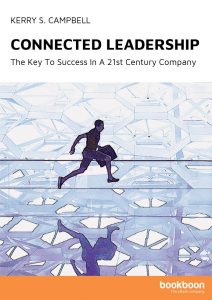Leadership: A definition of 21st century leaders


With the rise of technology have come new ways of working and a demand for new leadership styles. Kerry S. Campbell looks at the definition of a 21st century leader.
What makes a leader a leader in today’s corporate world? This question was on my mind about a year ago as I started a new job with a new company. Here I was working with the CIO to define learning and organisational development initiatives to help him drive strategic business initiatives, which not only impacted his organisation, but the entire company, as a whole. A year prior to this, it would have been impossible to have this kind of collaborative relationship. That’s because there was a different leader then. And, the organisation was suffering. Employee morale was low, customer satisfaction was declining, and employees were leaving in droves. Within a short period of time, this new leader had dramatically turned the technology organisation around – time to value was up 40%, employee morale was coming back, there was a focus on cross-group collaboration which showed increased results in executing on company initiatives. People started to feel proud again about the work they did. This got me thinking – what was different about characteristics of this leader that helped achieve such a dramatic shift?
The reasons why it was on my mind were many. One of them was because I was engaging with leadership in the c-suite that exhibited certain characteristics that were different than those I had experienced in other companies. I work in high tech. I spent many years in Seattle working for one of the most well-known high tech companies in the world, and some not so well known ones. I grew up living under my parents’ mentality of the 50s – work hard, do what you’re told, save your pennies, and you’ll do well. But, the primary years of my career were spent working during the 90s and early 21st century, where the working landscape was a lot different and changing rapidly. Globalisation expanded companies all over the world, such that you often spent more time with virtual teams and colleagues half way around the world, than you did with team members in your own local office. The advent of the internet and smart phones meant you were accessible anytime and anywhere and suddenly you were working at home in the evenings, on the weekends, or during your daughter’s soccer game. Companies were organising themselves differently too, in order to adapt to the new economy. They weren’t top down hierarchical so much anymore as matrixed organisations with teams working cross-functionally. The idea of a leader was shifting. For most of the 20th century, a leader was a leader by default of his or her title being the highest one up the corporate ladder. They gave orders and people followed the orders. By the late 20th century, a leader was one who often led a team of people across different organisational functions and, while they often had a high-level title, they didn’t always have people on the team directly reporting to them. They were a team lead. One style of leadership tended toward autocratic rule. The other style of leadership tended toward more how to manage a project and influence people. Both had their place in their time.
The idea of leadership was no longer to give orders and expect people to take orders like in the mid-20th century, but was now a late 20th century construct of leading cross-functionally.
However, what’s wrong with these two models? If you’ve ever been down the chain of command or a team member on a cross-functional team, you have probably yearned for a new approach to leadership. One that actually involves you. Historically to date, leadership has been defined as a sort of “driving people to get something done.” It has not been about engaging people and bringing them into the vision of the mission or feeling any personal responsibility for the outcome. People were just cogs in the machine to fulfil corporate goals and leaders were the minions who went out and moved the masses to get the work done. I can tell you how I felt working within such leadership paradigms:
- Disempowered
- Disengaged
- Disillusioned
- Disappointed
- Dissatisfied
- Disconnected
If this is the experience of many of us in our corporate lives, then we have a huge opportunity within our corporate cultures to take a look at how we define leadership and how we can be more inspiring and empowering leaders. This is especially important in our 21st century, where a new generation of workers are coming into the workforce and grew up with a different mentality. They watched their parents suffer the burn out of working too hard and too many hours under leadership regimes that negated the primacy of the person. They grew up in a world connected from day one – not only through globalisation, but through social media, and instant access to information. They are entrepreneurial in nature, smart, and mobile. If companies today want to engage and retain such talent of the millennial generation, then they need to think differently about leadership.
So, what was it about the leadership characteristics of the current company I had just started working for that struck me so much? There were many – but these weren’t just ones that I had only witnessed here. I had seen sparks of these characteristics throughout my career in various ways – with leaders I’ve worked with at various levels of the organisation, as well as with the individual level from working with people who didn’t even have a leadership title. See, the thing is, with the new leadership paradigm, we are all leaders in our own right. Every one of the leadership characteristics in this book should not only be something for titled leaders to develop and exemplify, but they are also ones that each individual contributor can and should aspire to. What’s the common theme that threads through all these characteristics? Fundamentally, it’s about fostering a sense of connection and cultivating employee engagement.
Would you like to read more? Download Kerry S Campbell’s eBook “Connected Leadership” which outlines 12 traits of connected leadership, shows their powerful impact on cultivating a thriving corporate culture, and highlights ways a leader can seek to develop them for maximum impact.




